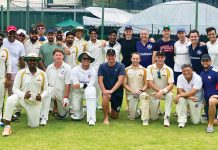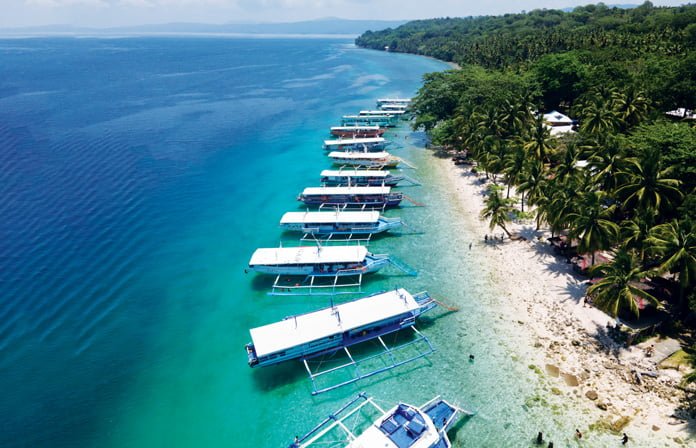 As our plane descended towards Davao, I was captivated by the stunning landscapes below. Often referred to as the “Crown Jewel of Mindanao” and the “Durian Capital of the Philippines,” this lesser-known island (one of 7,000 in the Philippines), had been on my travel wish list for quite some time. Its multicultural city of Davao promised not only picturesque scenery and delectable cuisine, but also a rich tapestry of cultures and traditions.
As our plane descended towards Davao, I was captivated by the stunning landscapes below. Often referred to as the “Crown Jewel of Mindanao” and the “Durian Capital of the Philippines,” this lesser-known island (one of 7,000 in the Philippines), had been on my travel wish list for quite some time. Its multicultural city of Davao promised not only picturesque scenery and delectable cuisine, but also a rich tapestry of cultures and traditions.
Population & Local Culture
The heart of Davao beats with multiplicity, with its 1.7 million residents representing 11 distinct ethno-linguistic groups. Dabawenyos, the local residents, mostly identify as Visayans, while the remaining population consists of lumads or indigenous people (IP), each belonging to unique ethnolinguistic backgrounds. What’s remarkable is the unity in diversity here, making Davao one of the world’s safest cities, where different cultures and traditions harmoniously coexist.
Philippine Eagle Foundation, Malagos, Davao City
My trip began with a visit to the Philippine Eagle Foundation (philippineeaglefoundation.org), nestled within the lush Malagos Watershed in Baguio District. This 8.4-hectare sanctuary is a crucial hub for conserving the critically endangered Philippine Eagle, the country’s national bird, and other birds of prey. While the primary mission is conservation and education, it has also evolved into a must-visit tourist destination. Here, we caught a glimpse of these majestic birds and learned about their vital role in the ecosystem.
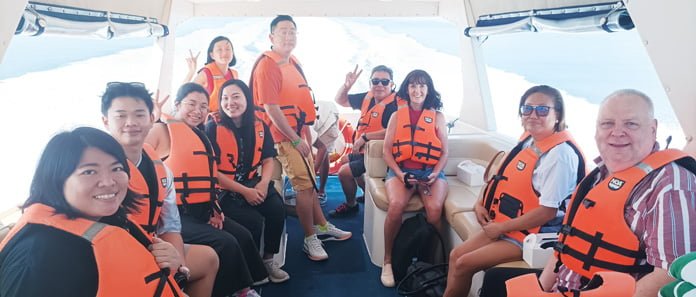
Malagos Garden Resort
The schedule continued as we ventured to Malagos Garden Resort, a haven for nature enthusiasts located in Barangay Malagos in Calinan. Known for its commitment to environmental awareness and wildlife habitat restoration, the resort offers an array of attractions. I loved the bird dome sanctuary, where I interacted with colourful, cheeky avian friends before exploring the butterfly museum next door.
The newly opened Chocolate Museum was a sweet treat, especially as we had the chance to create our own handmade chocolate. The culinary journey just got better from there with lunch at Malagos Garden Resort (malagos.com). This restaurant comes with a farm-to-table concept, offering gastronomic delights made only from delicious, fresh, homegrown ingredients.
Eden Nature Park & Resort
The following day, we found ourselves at Eden Nature Park (edennaturepark.com.ph), a 75-hectare mountain resort perched 3,000 feet above sea level. These highlands are a place where serenity meets adrenalin, with lush pine forests, cool mountain air, and a range of thrilling activities. Some heart racing activities included the sky cycle and pedalling a bicycle high above the forest floor on a cable wire. The sky swing was an exhilarating freefall experience, and the skyrider allowed us to soar through the treetops.
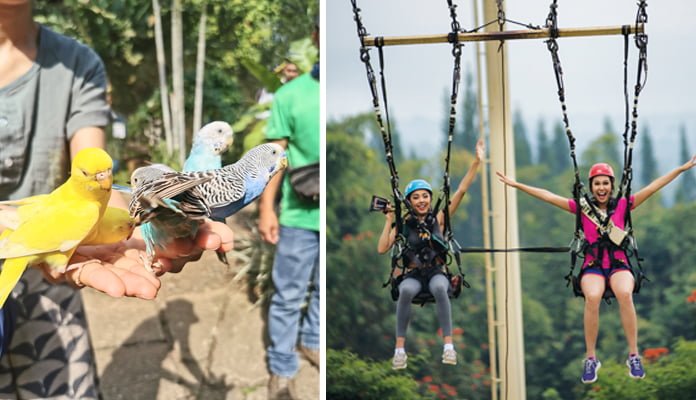
Afterwards, we ate at the resort’s restaurant, where local and international recipes came together. A nature hike through the ravine walks and boulder paths immersed us in the tranquility of the surroundings, accompanied by the soothing sounds of nature.
Eden Nature Park also has something special for families – a cultural insight into the heartland of Indigenous Wisdom called Tinubdan. This fascinating cultural park-within-a-park provides history into the customs, traditions, beliefs, and way of life of the indigenous peoples of Mindanao.
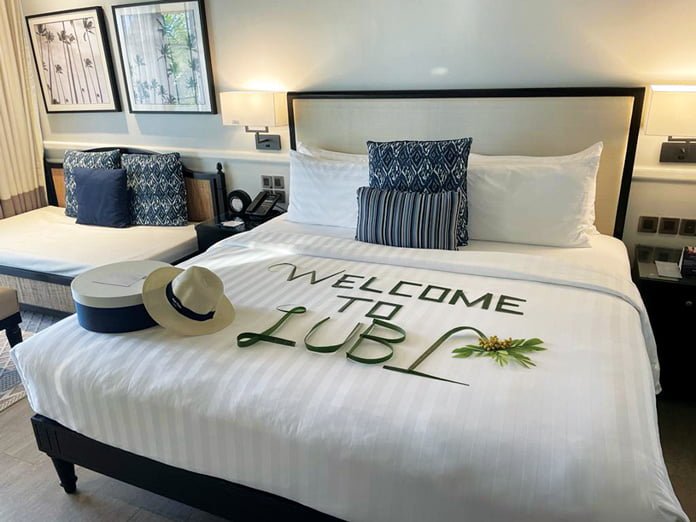
Samal Island
Our escapades wouldn’t have been complete without a Samal Island Hopping Adventure. Known for its white sandy beaches, snorkelling sites, caves, and waterfalls, Samal Island is a tropical dream just a stone’s throw from Davao City. Anchoring offshore for a few hours of snorkelling the extensive coral gardens, we discovered the vibrant marine life unique to the island, setting the stage for a day of exploration.
Fresh fruit and local snacks fuelled the remainder of time on the island, where we spent the day relaxing on its peaceful shores. We ate fresh barbecued seafood, and even witnessed the more daring members of our group climb cliffs and plunge into crystal-clear waters.
To note: Samal Island is prone to typhoons, so the best time to visit is during the dry season, from December to May. The island is also known as the “Island of Festivals” and celebrates events like the Kabasan Festival in May and the Caracoles Festival in April.
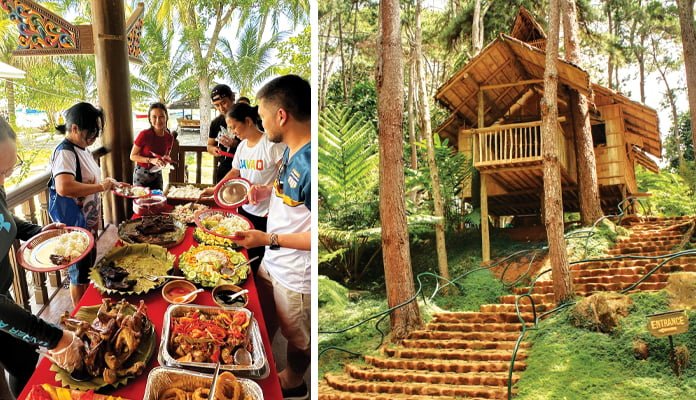
Dusit Thani Lubi Plantation
Our final destination in Davao was the Dusit Thani Lubi Plantation Resort (dusit.com/dusitthani-lubiplantationresort), an island retreat surrounded by coconut trees, white sand beaches, and extraordinary marine life. This luxury resort, located in Davao de Oro, offers a wealth of activities, including both water and land sports comprising a fully equipped gym, tennis courts and mini golf. For those who prefer to stay indoors, there’s an e-games centre.
On recommendation from our resort hosts, we set our alarms for a 5am wake-up call to catch the sunrise from the jetty. The sun coming up from behind the mist shrouded mountain tops of the mainland gave Davao an ethereal glow that inspired our group to take extra time out for a yoga session. Once the sun was nestled in the sky, we took advantage of the bright morning light and explored the gin-clear waters and coral reefs around us; the shallow depths made it an ideal spot for snorkelling. For those wanting to stay dry, the elevated jetty provided amazing views of all the happenings in the underwater world.
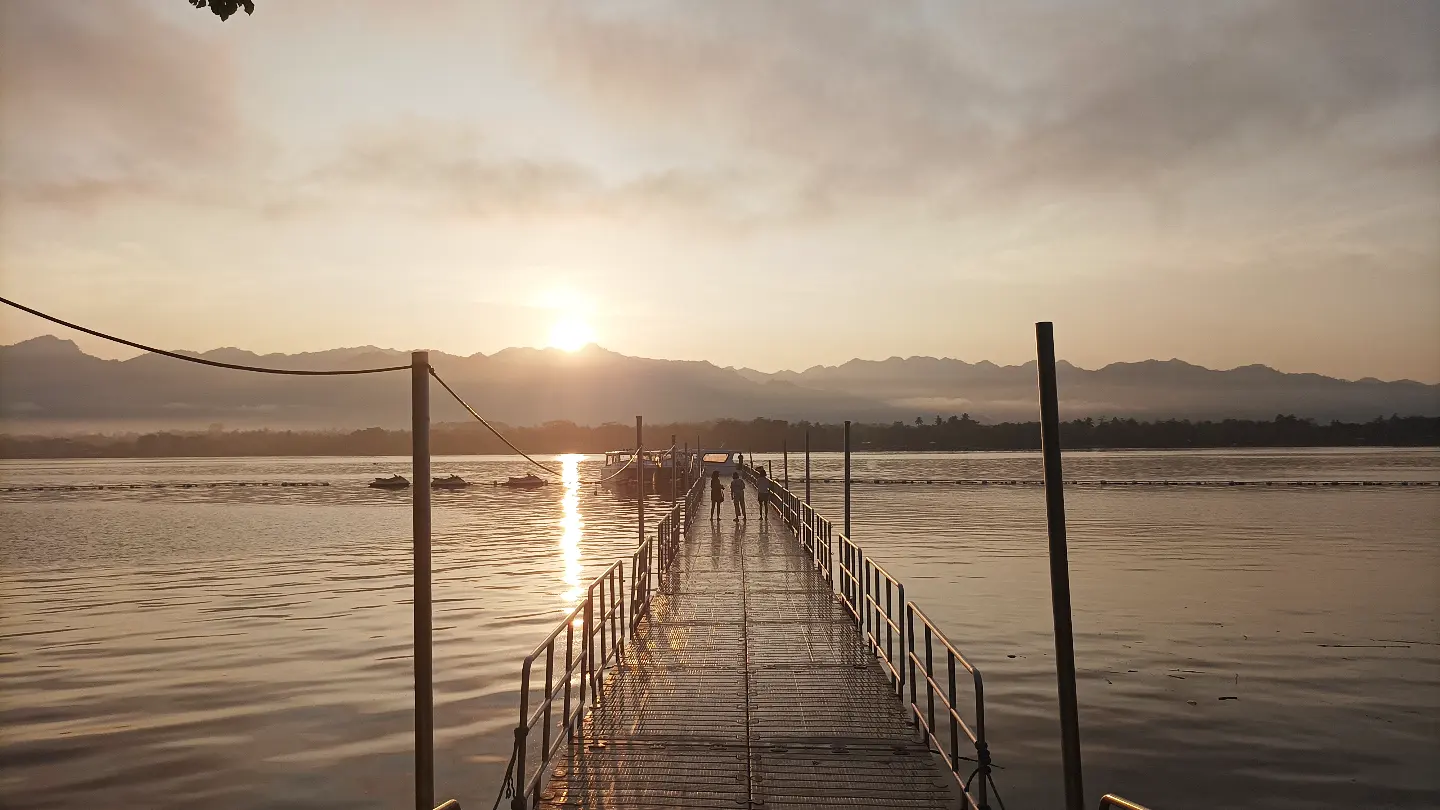
The villas and grounds at Dusit Thani Lubi Plantation Resort are nothing short of fabulous. Our premier room with an Ocean Balcony allowed us to relish the ocean vista and gave easy access to the beach, just a few sandy steps out from our private beach patio.
Dining options at the resort are many, from Thai cuisine at Ga-Ti Thai Restaurant to casual dining at the Burger Bar and Steak Room. My favourite, Tarictic Grill, offered a blend of international and Filipino dishes.
As the day turned to night, we indulged in after-dinner karaoke, belting out tunes from the 80s and 90s in one of the resort’s two dedicated karaoke rooms. Our trip to Davao was a whirlwind of culture, adventure, and chill. From the rich cultural tapestry of Davao City to the adrenaline-pumping activities at Eden Nature Park, the underwater wonders of Samal Island, and the luxurious tranquillity of the plantation resort, Davao delivered a relaxing yet adventurous getaway less than a 4-hour flight from Singapore. It was a getaway filled with memories of this remarkable corner of the Philippines.
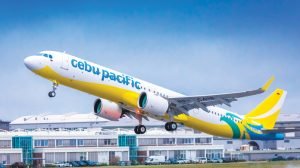
GETTING THERE
We flew Cebu Pacific (CEB), the nation’s leading airline. Since its inception in March 1996, CEB has consistently championed the “low fare, great value” strategy. Setting itself apart, CEB operates one of the youngest jet fleets globally, ensuring not only reliability but also a commitment to sustainability. With creative pricing, this airline strives to provide affordable fares year-round, making your dream destination more accessible than ever.
CEB aligns with global sustainability goals by operating the greenest aircraft in the industry, the A330NEO, contributing to a greener future. With an extensive network of 34 domestic and 25 international destinations, served from hubs in Manila, Cebu, and Clark, your journey with Cebu Pacific promises to be the perfect start to your Philippine adventure.
Cebu Pacific offers flights Singapore – Manila (3x daily) and Singapore – Davao (4x weekly) cebupacificair.com






